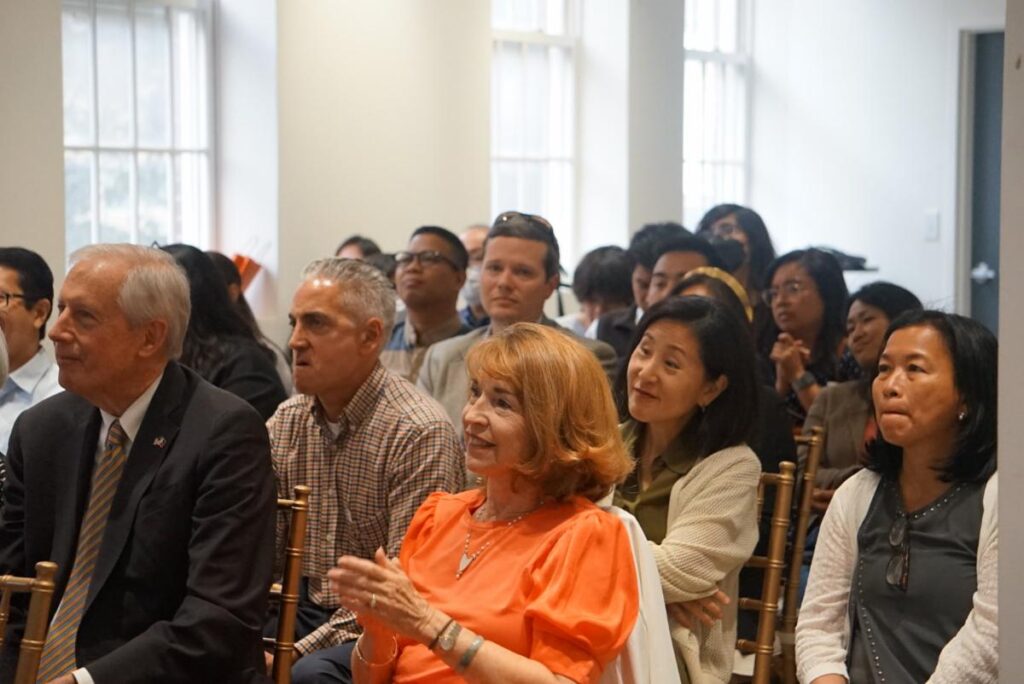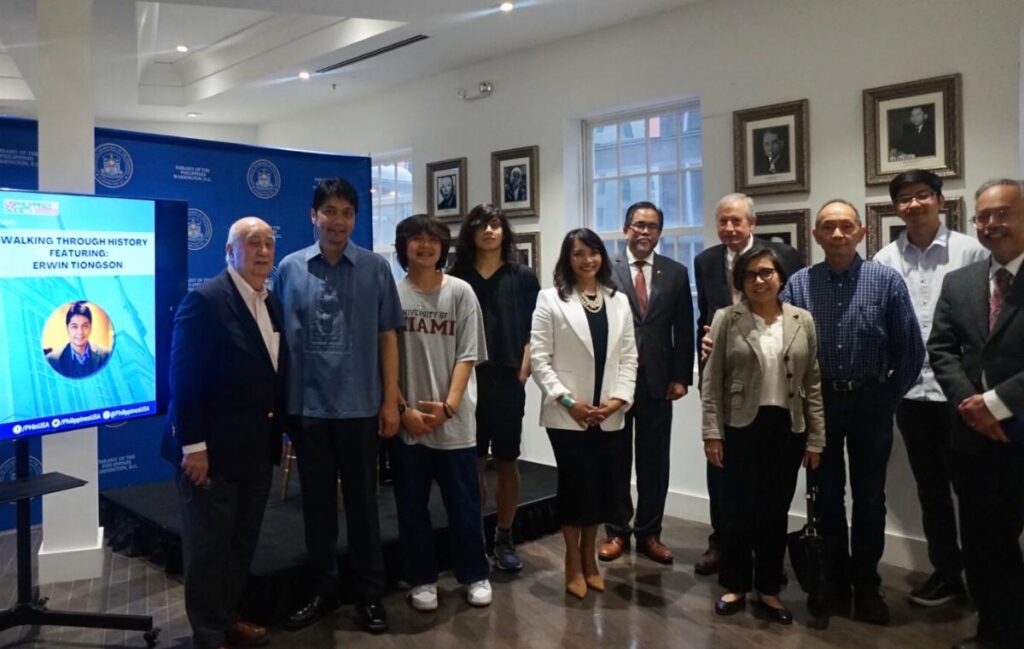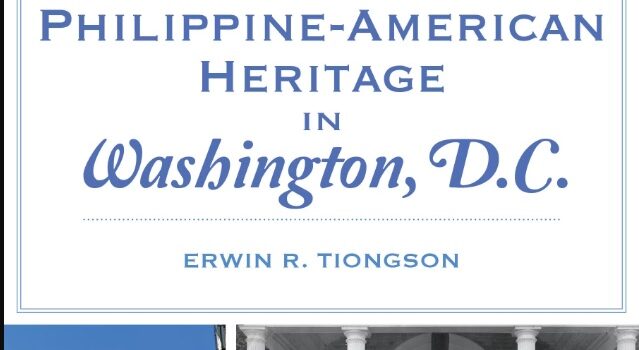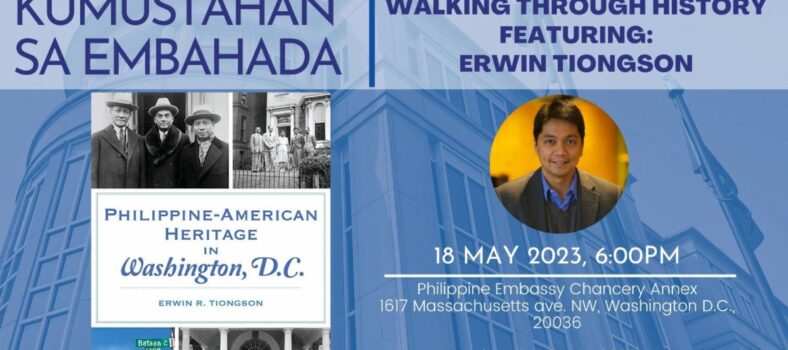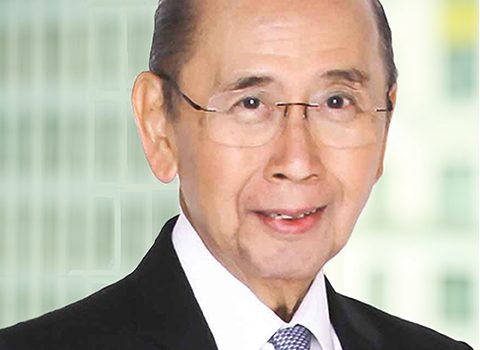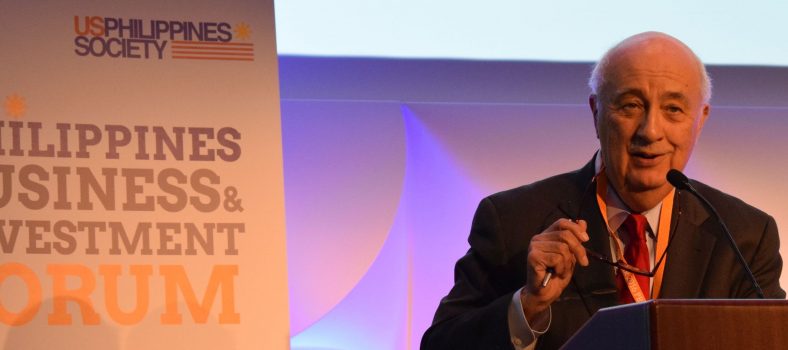Marking Asian American and Pacific Islander Heritage Month: Philippine Historical Tour in Washington
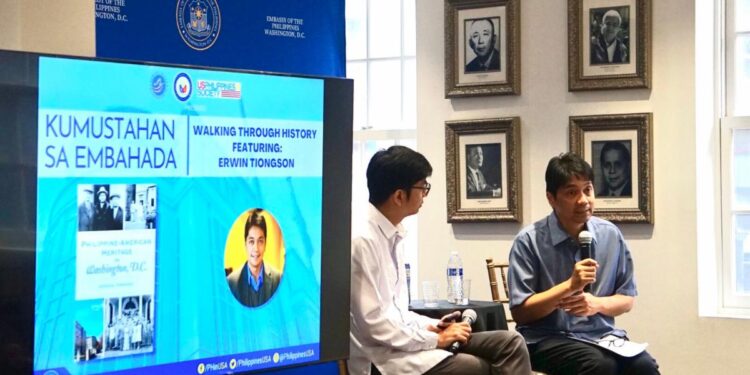
As we celebrate this month’s Asian American, Native Hawaiian, and Pacific Islander (AA and NHPI) Heritage in the United States, the US-Philippines Society and the Philippine Embassy in Washington DC hosted a May 18 book event “Walking Through Philippine History in Washington DC,” featuring writer and Georgetown University Walsh School of Foreign Service professor Erwin Tiongson, at the Philippine Chancery Annex, a Philippine National Historical Landmark.
Professor Tiongson’s book titled “Philippine American Heritage in Washington DC” is a product of three summers of writing during the pandemic and ten years of extensive research, and inspired by his family’s interest in Philippine history in the nation’s capital. The family project, fondly known by locals as POPDC (Philippines in the Potomac DC) identified over 250 key historical places from an initial 30. His May 18 presentation focused on his chronicle of events connected to the Philippine Chancery and several extraordinary figures and pioneers who worked, collaborated, and represented the Philippines in missions seeking Philippine independence, women’s suffrage, and equality.
On his walking tours, Professor Tiongson begins with Carlos P. Romulo, who took part in major events, laying the foundation of Philippines and United States relations during critical times. Of Romulo, Tiongson described him as “a journalist, editor of a major paper, university professor, later university president, a Pulitzer Prize winner, war time General, and one of the signatories of the United Nations Charter. He was present at the key moments of world history that shaped much of the world that we know today.”
Situated today facing streets named after Bataan and Corregidor, two WWII battle grounds in the Philippines, the Philippine Chancery Annex had displayed a large Philippine Flag, a personal gift from an American to then Resident Commissioner Carlos P. Romulo, flown in peacetime position in August 1945 marking the end of WWII. At that time, the Resident Commissioner of the Philippines, a non-voting member of the U.S. Congress, held office at the Chancery. The Philippines reestablished independence in 1946.
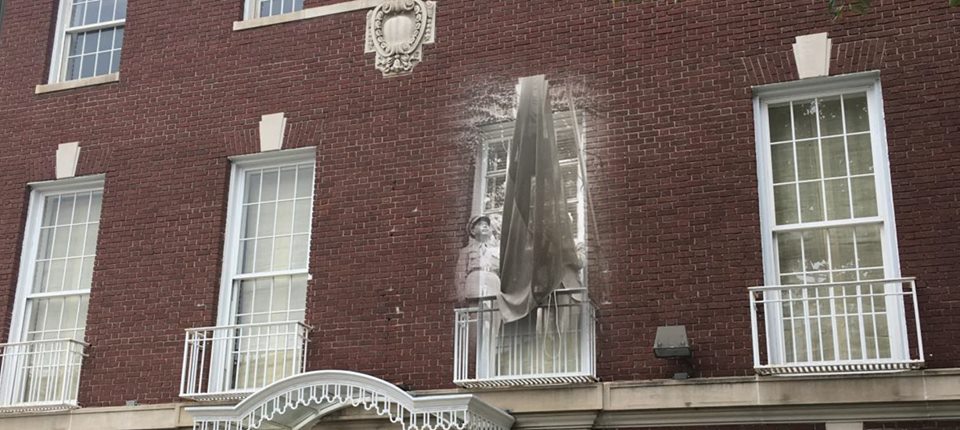
Photo: Image recreation of Resident Commissioner Carlos P. Romulo during a flag-raising ceremony at the Old Philippine Chancery in Washington DC, August 17, 1945, signifying peacetime and end of WWII. Photo credit: Philippines on the Potomac-DC
The book also highlights Philippine Commonwealth President Manuel L. Quezon who led Philippine missions to Washington DC as Philippine Senate President and his life as president of a government in exile during Japanese occupation of the Philippines. During the war, Philippine literary artists including Arturo Rotor (Secretary of President Quezon), Bienvenido Santos (Assistant to Carlos P. Romulo), and Jose Garcia Villa (writer for the Office of the Resident Commissioner) worked in the Chancery under the Philippine government in exile.
Other notable historical figures cited in Tiongson’s presentation were Carlos Bulosan (labor activist and writer), war hero pilot Jesus Villamor, Nestora Calabia (PH Women’s Club founder), and Guillermo Tolentino (sculptor, writer and poet). He engaged the audience by reading excerpts from award-winning literary pieces and shared various photos and stories about love, struggles, and life as Washington residents. Their achievements are celebrated in the United States particularly during the AA NHPI Heritage month as leaders, brave immigrants and residents whose contributions to nation building and shared PH-US history embody resilience and diversity.
During the open forum segment that followed his presentation, Professor Tiongson fielded questions including one raised by President Amb John Maisto about the Visayan Circle and the “Manila House” engraved in a plaque near the George Washington University campus. The Visayan Circle, an organization with members from the Visayan region, had purchased the Manila House (Visayan Circle Inc) that welcomed Filipino immigrants as a place to belong, a center with home-cooked meals of adobo and other Philippine cuisine. They also organized a welcoming reception for the Philippine Independence delegation as shown in the picture below.
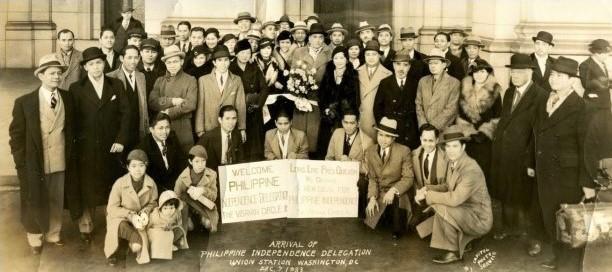
Photo: The Visayan Circle in DC welcoming the Philippine Independence Delegation led by future Commonwealth President Manuel Quezon, 1933. Photo courtesy of Tino Calabia.
In closing remarks, Executive Director Hank Hendrickson thanked Professor Tiongson for his meticulously researched work that documents ties between leading figures and behind-the-scenes players connecting the Philippines to Washington DC. He also called attention to the book’s section on the Blair House, the U.S. President’s Official Guest House, that has welcomed visiting presidents including former Philippine presidents Elpidio Quirino (1949 and 1951), Carlos Garcia (1958), Ferdinand Marcos, Sr (1966 and 1982) and President Corazon Aquino (1989). He noted that in early May 2023, President Ferdinand R. Marcos, Jr. also used the Blair House for high-level meetings, including with the US-Philippines Society and other groups, to promote US-PH business partnerships, a key component of the joint US-PH Leaders’ commitment to advancing broader bilateral ties in a new era.
Philippine Embassy Deputy Chief of Mission Jaime Ascalon welcomed the audience representing the Filipino American community, and members of the US-Philippines Society. Also present were Erwin’s children, brother Hector and family. Cultural Affairs Vice Consul Mark Lim served as moderator.
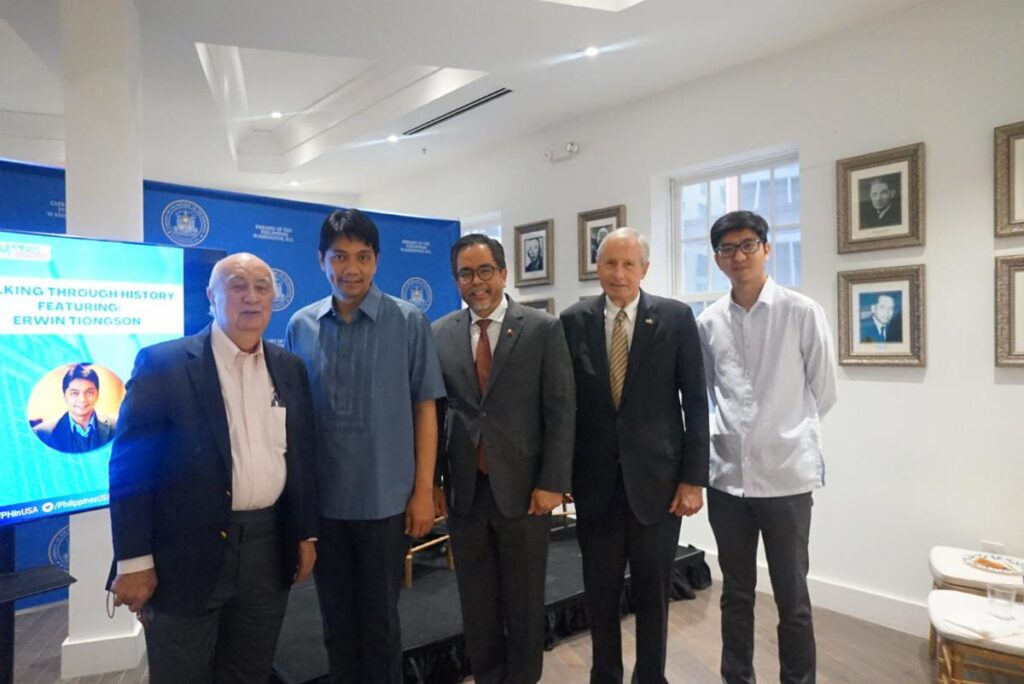
L-R: USPHS President Amb John F. Maisto, Erwin Tiongson, DCM Jaime Ascalon, Executive Director Hank Hendrickson and Vice Consul Mark Lim. Washington DC. 18 May 2023.

